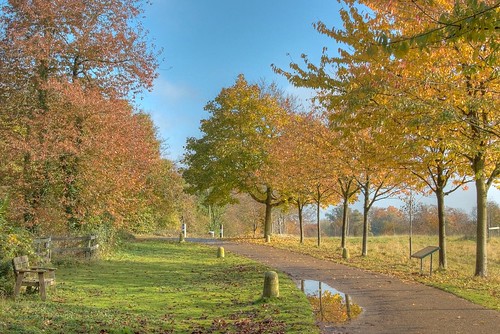This year's must-do geek photographer activity seems to be the production of HDR (High Dynamic Range) photos. Here is my first attempt ...
For any of you not familiar with the technique, the theory is that several images of the same scene, which are identical except for exposure, can be cleverly combined by computer to produce a high dynamic range image. Because one image will have exposed highlights correctly, and one shadows, it is possible to have all parts of the image exposed correctly even in a high-contrast scene, such as one containing bright sky and shadows.
So much for the theory. In practical terms what you probably need (or at least what I have used is):
- A camera that does automatic bracketing with sufficient exposure differential (my Nikon D50 will take a three-image bracketed set at -2, 0 and +2 stops)
- A heavy tripod - each scene must be the same so the camera needs to be held firmly in place
- A remote shutter release - optional, but helps greatly to keep the camera un-moved
- Software - I've used Photomatix.
That's the basics, for an in-depth tutorial and a glimpse of what a master can do with HDR, check out Stuck in Customs.
So anyway, here is an autumn scene at Wandlebury, taken with the auto bracketing function. Note the rather bland "correctly exposed" image (centre), the too dark underexposed one to its left, and the more vivid over-exposed image on the right (with a blown-out white sky, actually it was blue).



All of these images were taken with a Nikon D50 and Nikkor 18-200 VR lens at 32mm and F11: only the exposure time varied. Before combination the images were corrected for lens abberations using DxO Optics Pro (processing from RAW). Here is the result of combining the three images using the "tone mapping" feature (and default settings) of Photomatix:

and a little further on down the path ...



yielding …

To me HDR images don't look much like photographs - they look much more like reality...